Since sometime around 3rd grade, I started using fountain pen for all school assignments as per my school curriculum in China. In primary school, shattered ink bottles and stains were a matter of life—a sacrifice made in exchange for better handwriting. When we entered middle school and heard that fountain pens were no longer required, everybody stopped using fountain pens almost immediately.
A few months ago I came across a beautifully precise aluminum fountain pen sold by Muji. This uniformly cylindrical, industrial pen sports a warm gray matte finish. The cap posts onto the back of the pen not by enveloping it, like many olive-shaped designs, but by wedging into a circular groove, forming a seamless body during writing. The machine-knurled grip provides friction and a refined reflection of the surrounding light, like a Milanese loop bracelet around a smooth forearm. The aluminum clip springs against the cap tightly and curls up at the tip like the flair of a slanted eighth note. Brighter and glossier rings cap the top and bottom of the pen, creating a subtle and symmetrical resolution to the endless stream of aluminum.
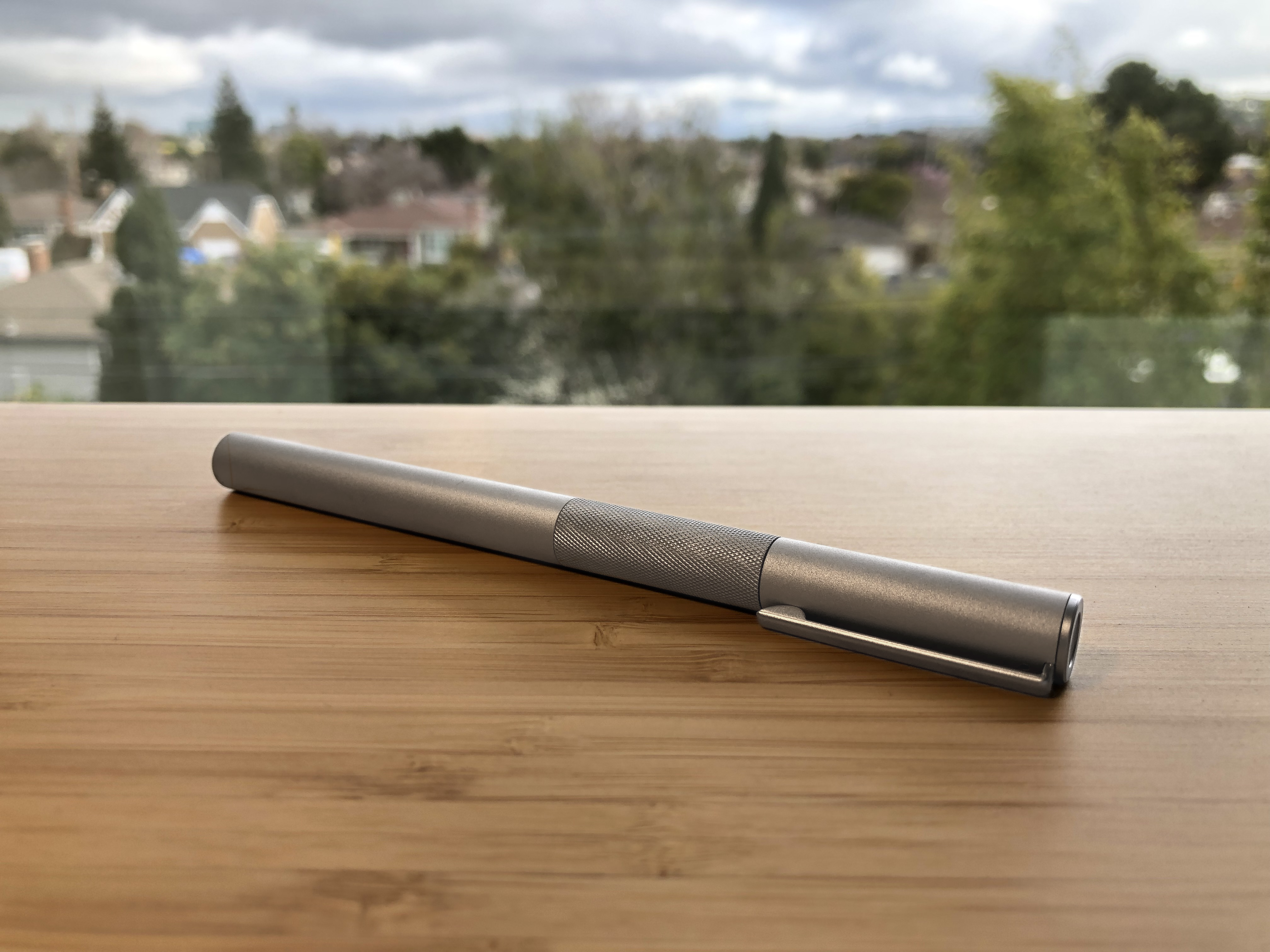
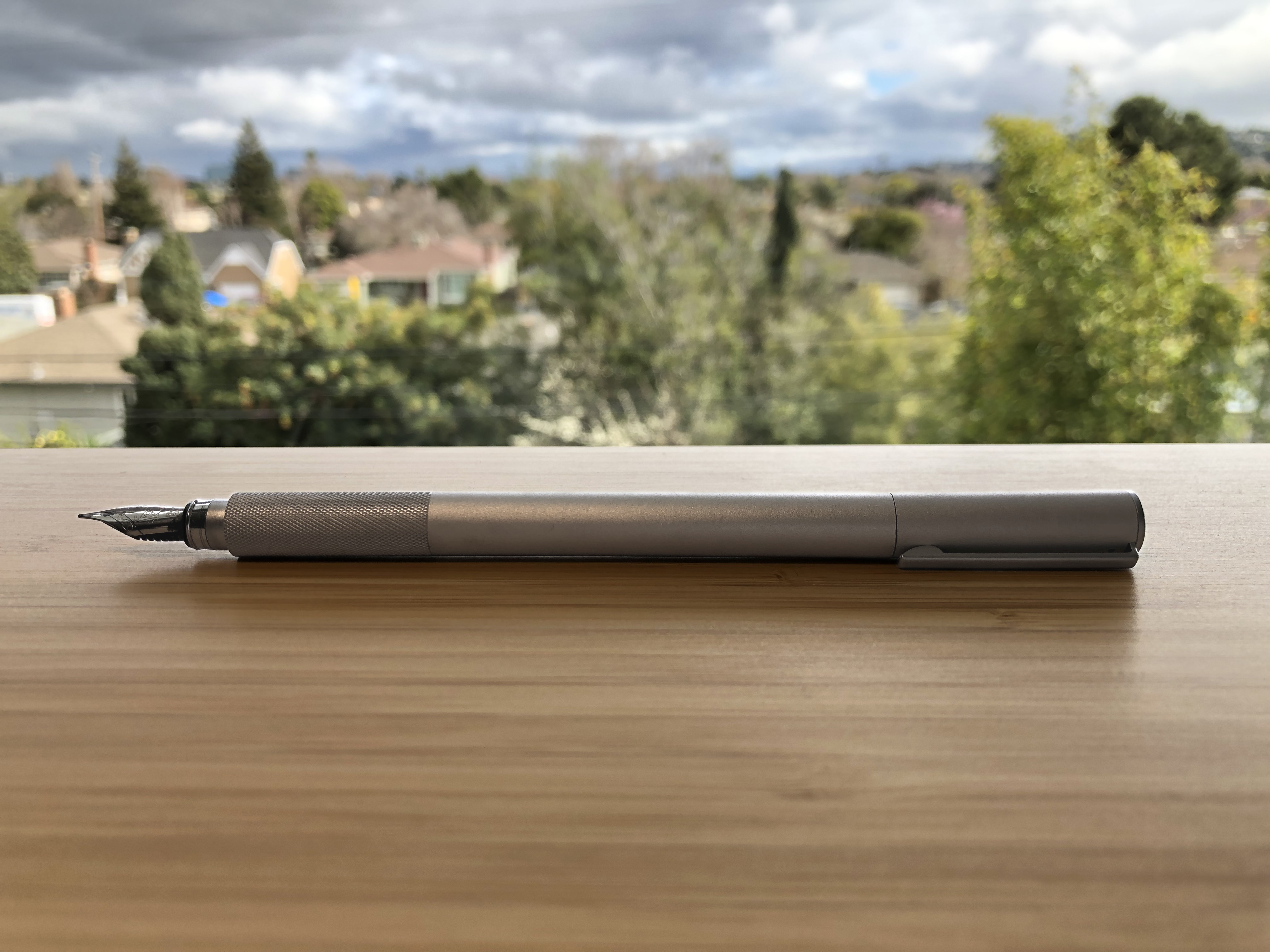
For a $15 pen, it looks impossibly great.
But, I can’t stand how bad the nib is.
The tip was scratchy and the ink flowed poorly—not comparing to even the entry-level pens by Lamy or Pilot.

Thinking the first one might be a QA fluke, I picked up another one again while traveling in Japan, which flowed very well. Pleased and reassured, I bought another one off Amazon in the states as a backup that turned out to be so wet my strokes feathered on paper. I now owned three of these pens with ink flow ranging from dry, to perfect, to flooding, and all of which were scratchy compared to your average rollerball pen. Muji’s hit-or-miss catalog has been quite apparent to me for a while now, and this nib issue is yet another lamentable miss.
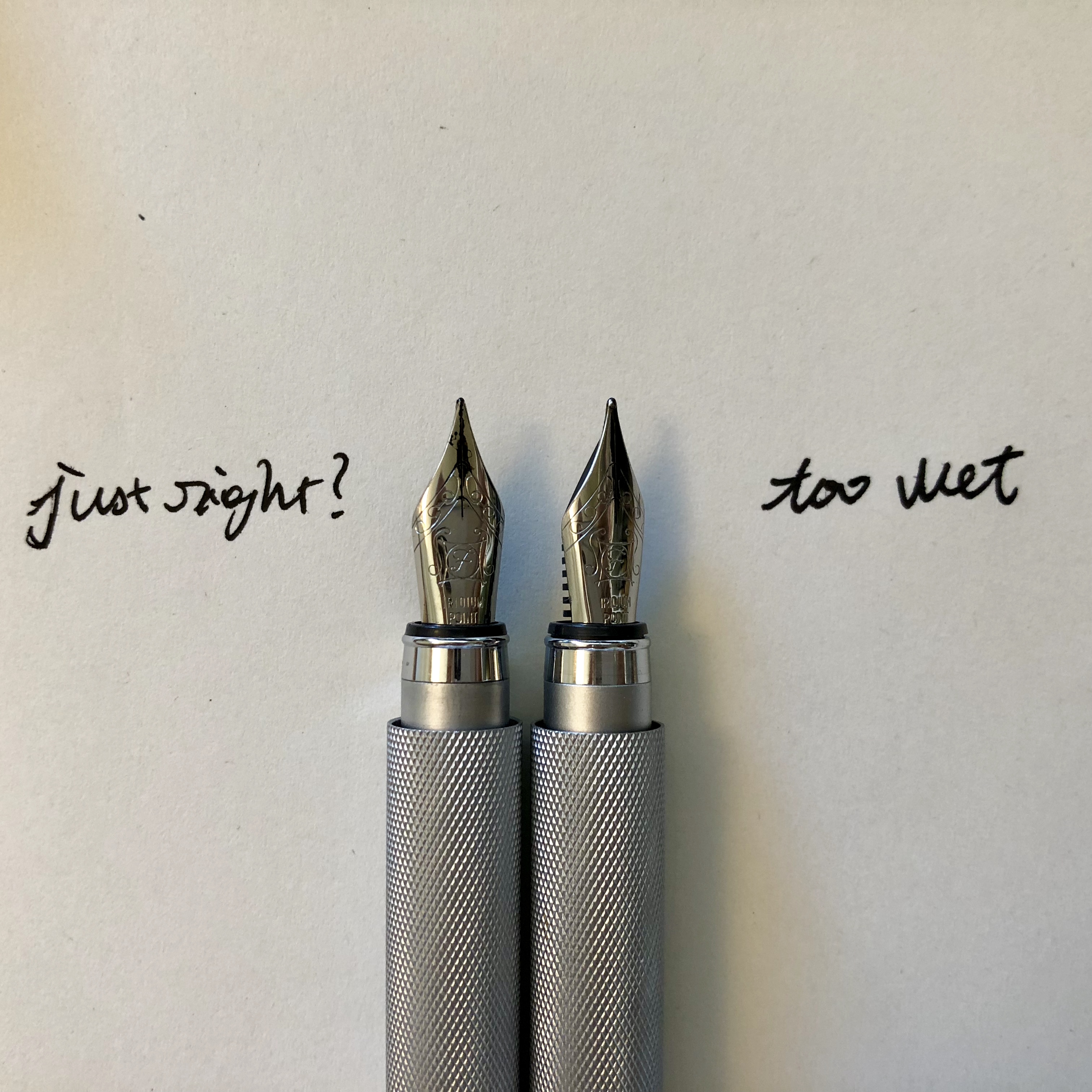
Unwavered, I started debugging. Air leak shouldn’t have been the problem since I used the same converter on all three pens, so I got a 10X magnifying glass to examine just what the heck was happening on these nibs. Upon a closer look, I could see that the tips weren’t even consistent between my 3rd and 2nd purchase. For some reason, both pens I bought in the States (1st and 3rd, dry and wet respectively) had more defined tips than the one from Japan.
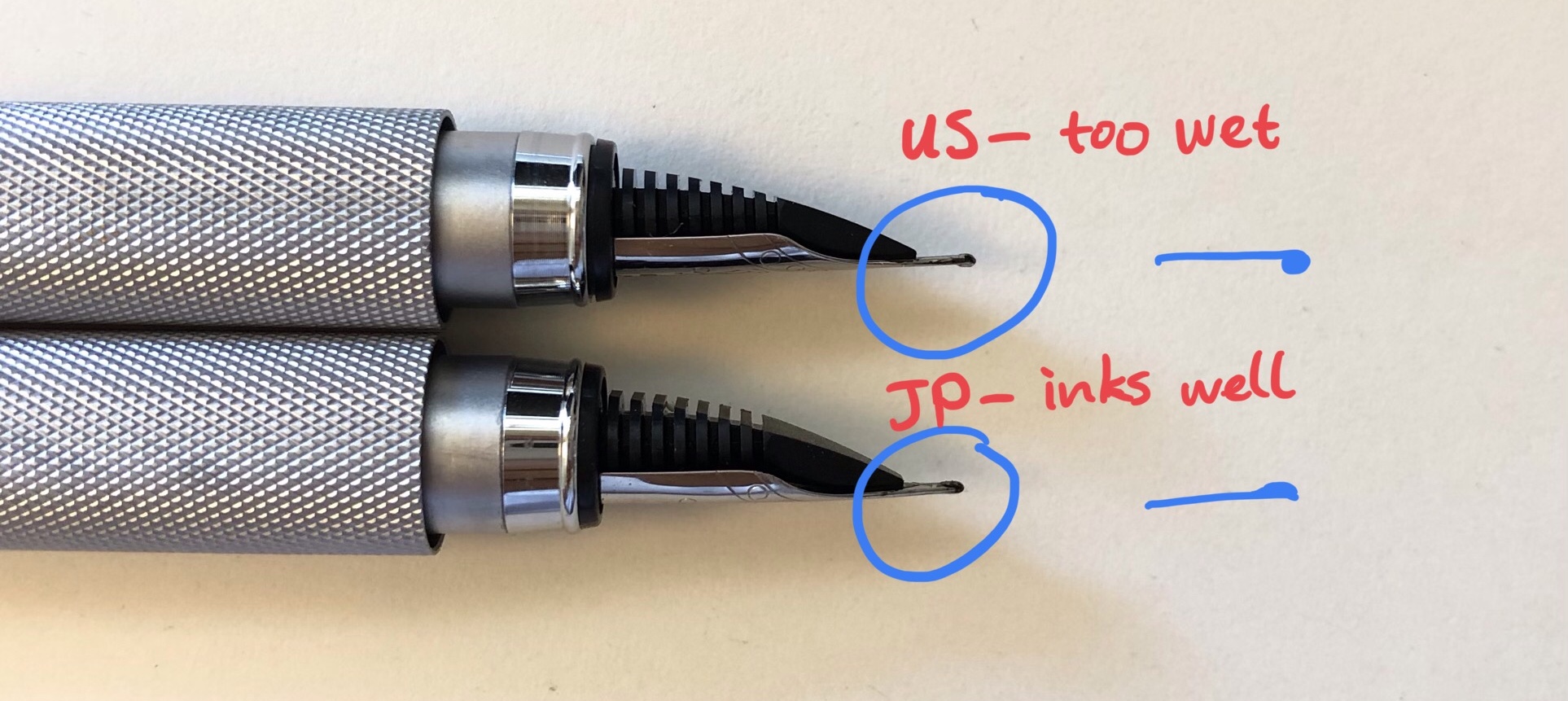
Knowing the source of the problems, I tried cleaning the wet nib and tightening the tines to restrict ink flow, which helped somewhat.
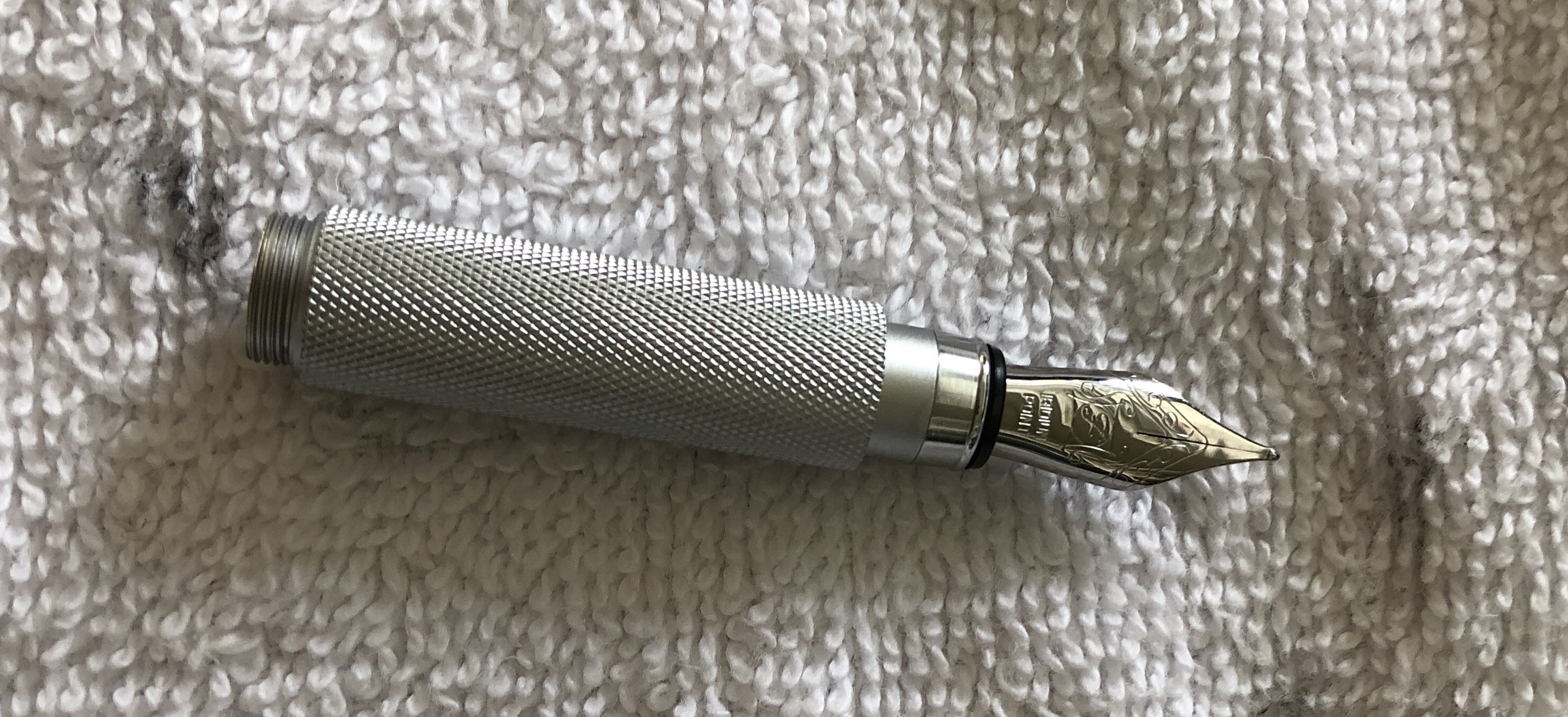
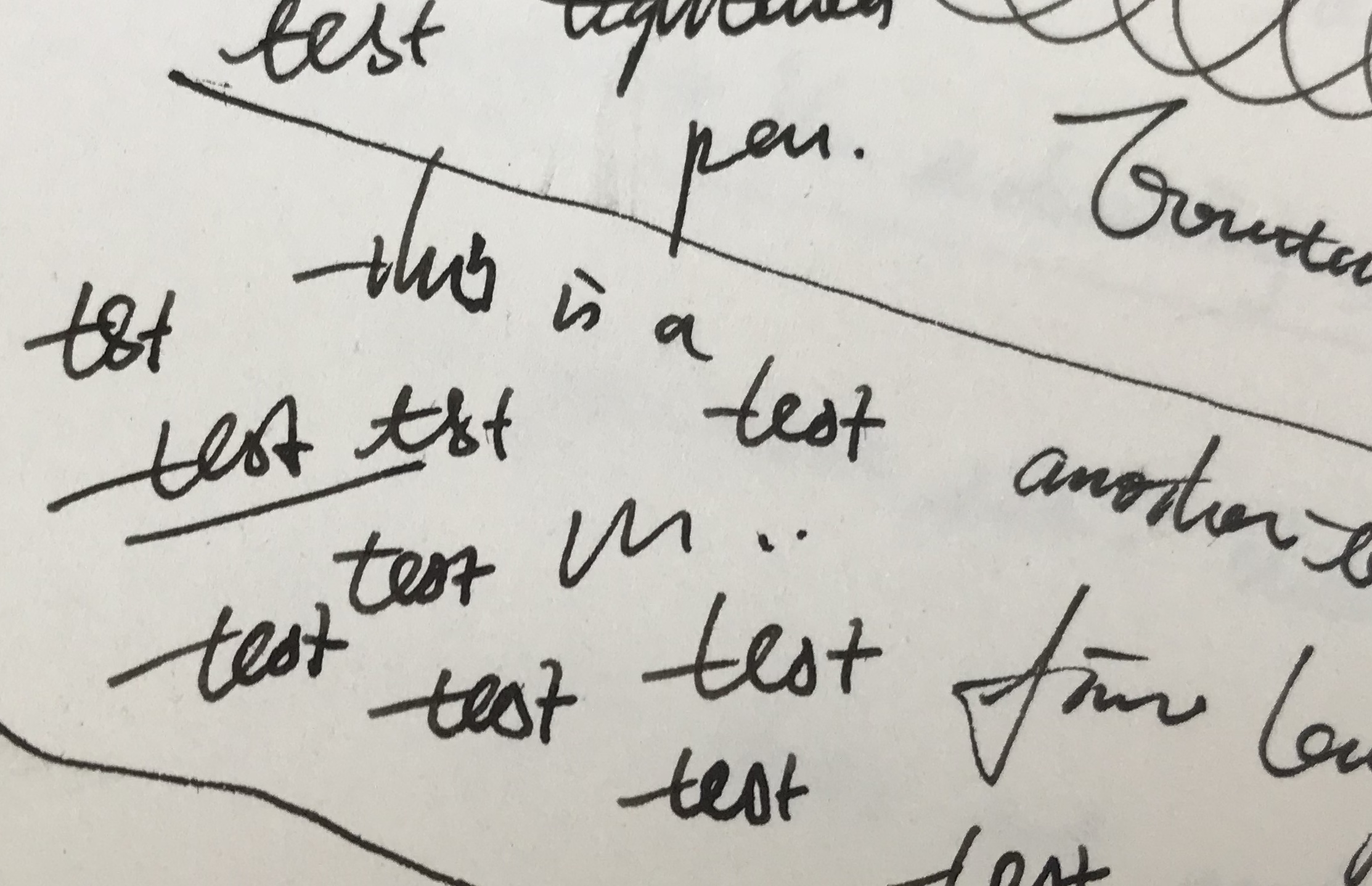
Encouraged, I took the overly dry nib, soaked it in cleaning solution for a night and loosened the tines correspondingly. That did the trick. Ink began to flow just as well.
With the ink flow issue resolved, my next challenge was the scratchy tips. Some might like a little grip, but I prefer a smooth-as-butter tip. I tried to polish the tips by writing 8's, alphabets, and other lines or circles on assorted micro-mesh soft pads, starting from coarser pads with grits of 1,500, and gradually working up to finer ones with grits of 12,000.

The result was odd. The nib became smooth at some angles and remained grippy at others. I tried writing on the mesh pads at a few more angles, thinking this was perhaps due to incomplete sanding, but the issue still persisted. On top of that, the already leaning-medium nib had become a solid medium, which was a bit too bold for my liking. I lacked both the skill and tools to properly sand a nib. At this point, I decided to give a replacement nib a try.
As I alluded to previously, the online community is full of other fountain pen lovers who take their pens very seriously. Thanks to their guidance, I learned that #5 nibs in general or Bock Type 180 nibs specifically are considered well-fitting replacements. I also found out that since Bock is probably one of the most well-known suppliers of quality nibs, they are extremely elusive and almost exclusively only supply to other pen makers rather than directly to consumers. Thankfully, after a few more hours of research, I found a website called Beaufort that ships replacement Bock nibs from the UK.
A week later, my Type 180 Bock nib arrived.
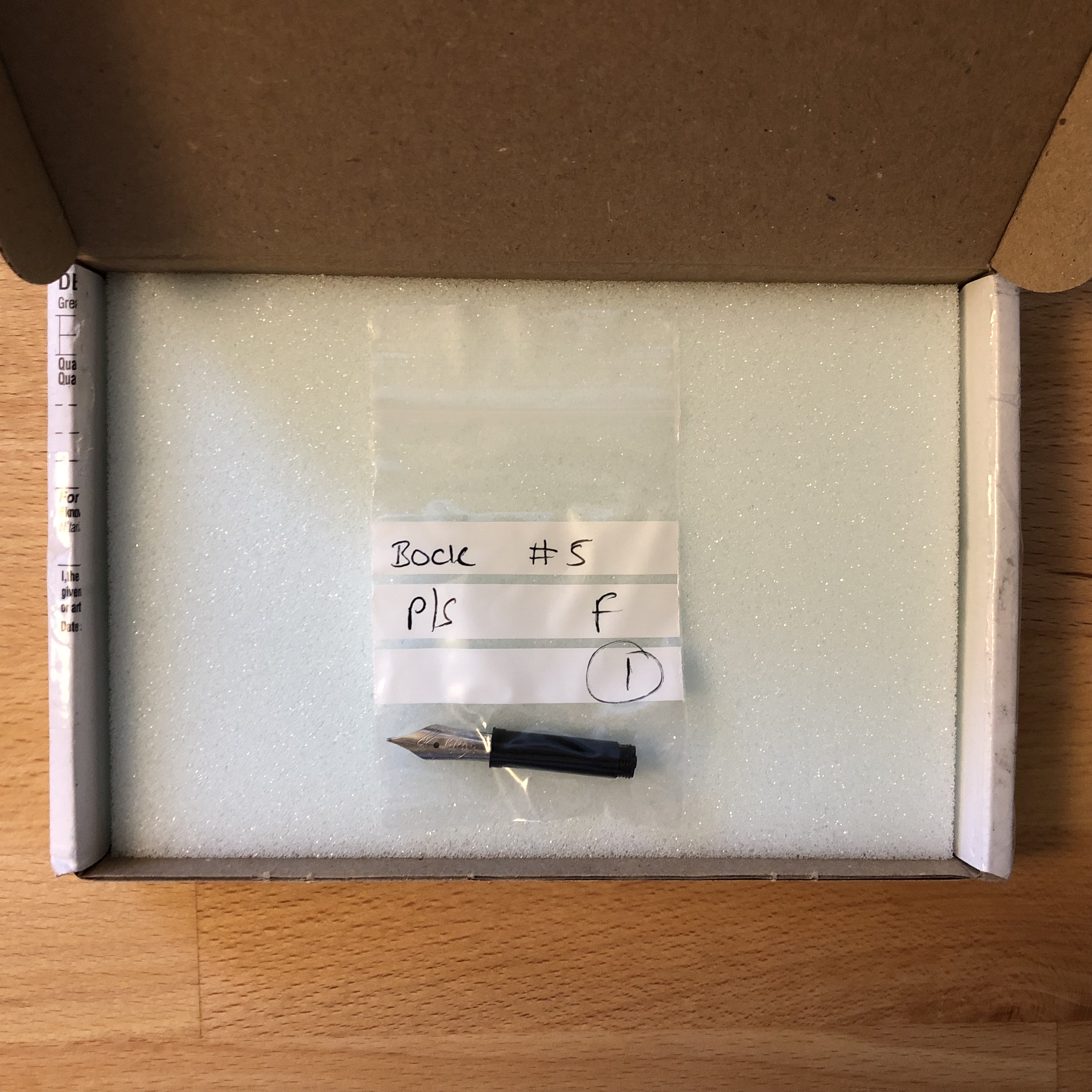
It took some strength to pull the nib out of the stock feeder and some more mess to insert the nib with Muji’s feeder into the fountain pen, but the result was just okay.
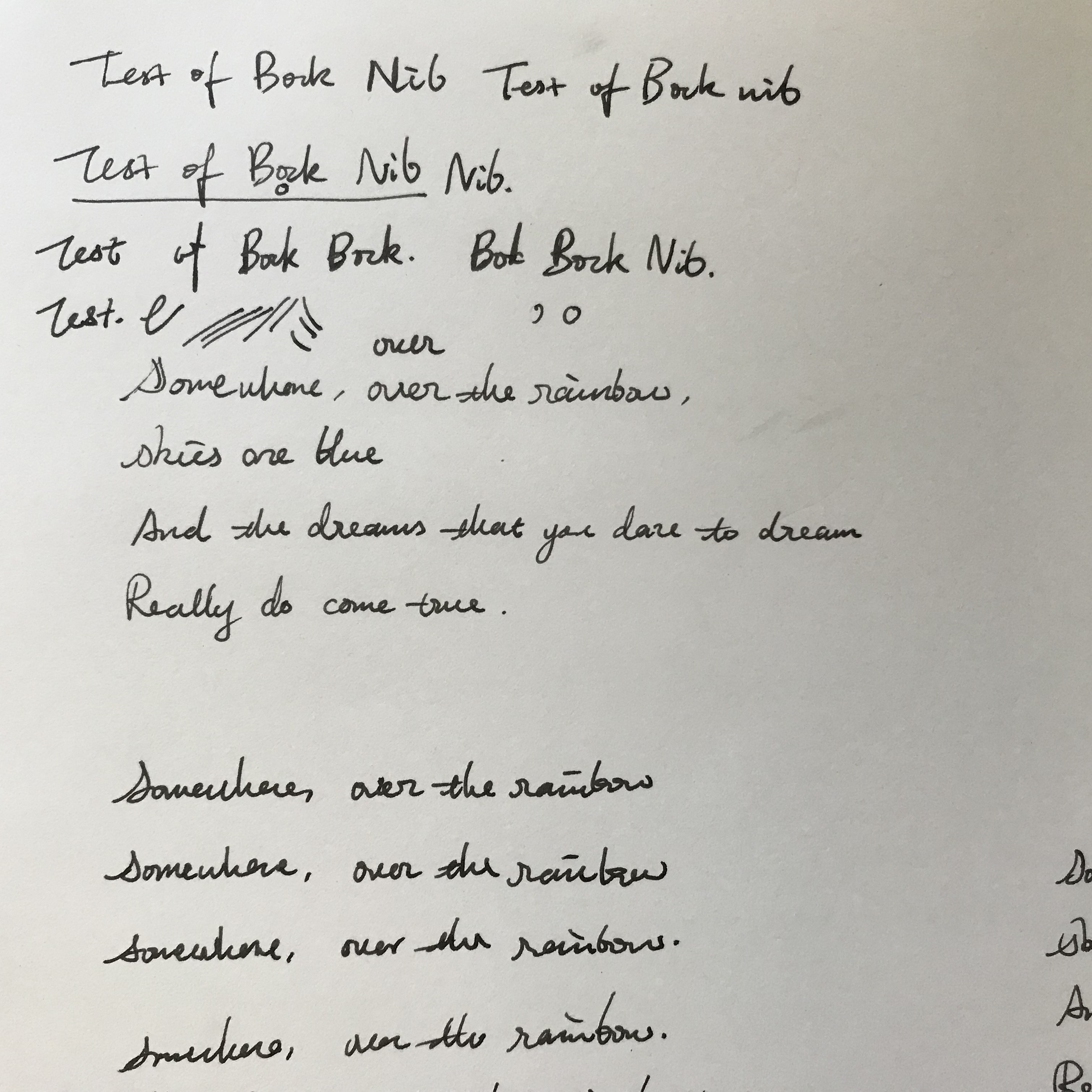
Since the nib wasn’t inserted all the way (the size wasn’t an exact fit for Muji’s barrel), the flow wasn’t exactly consistent or elegant. I tried adjusting the tines to control the flow, but it always ended up either too tight or too wet. After a few more hours of adjustments, I finally decided to call it a day and wrap up this month-long experiment to salvage the beautiful pen body.
So many objects in this world are aesthetically pleasing yet functionally flawed. Such designs cannot be called good design. I hope the nib can smooth out over time and become a truly deserving component of its beautiful barrel.
